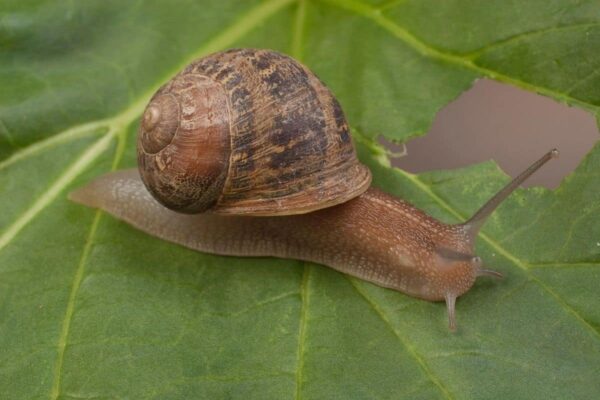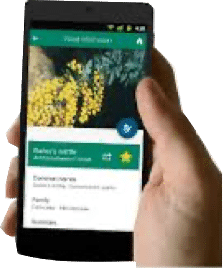Garden snail
About This Species
Garden snails (European brown garden snail) eats a wide variety of ornamental and agricultural crops and will compete with native snail and slug species for food and habitat. It is native to Europe, the Mediterranean and parts of Asia and Africa. The exact extent of damage caused by this species is unknown, but it is considered highly invasive. Therefore, all efforts should be made to eradicate it from areas where it has become established. Garden snails are designated as a Provincial EDRR species by the BC Provincial Priority Invasive Species List.
These snails can reproduce up to once per month under ideal conditions. They are hermaphrodites, meaning each snail has male and female sexual organs, and during copulation eggs are fertilized in both snails. Eggs are laid in small nest cavities 2.5-4 cm underground containing an average of 86 eggs.
This snail is quite hardy, and can survive temperatures as cold as -10 °C. When temperatures drop below 4.5 °C, they bury themselves in soil and seal their shells off with mucous, becoming dormant until warm weather returns.
How to Identify
Garden snails can be distinguished by its shell. The shell can be up to 3.5 cm wide, making this one of the largest snails in British Columbia. The shell has 4-4.5 whorls, and the last whorl before the shell opening is much larger than the rest. The shell never has stripes, and the body of the snail is a light brown.
Garden snails may be confused with local species such as the Pacific sideband (Monadenia fidelis) and the Oregon forestsnail (Allogona townsendiana). Juveniles may be confused with the Brown-lipped snail (Cepaea nemoralis), another invasive species.

Take Action
Prevention is the best approach.
-
If you need advice about invasive species on your property or you are concerned about reported invasives in your local area, contact your local government or regional invasive species organization.

Don't Let It Loose
Learn about best practices
Invasive species are plants, animals or other organisms that are not native to BC, and have serious impacts on our environment, economy and society. Never release your plants and animals into the wild or dump aquariums or water garden debris into rivers, streams, lakes or storm sewers!
REPORT TO PROTECT BC’S BIODIVERSITY

Use the app
Observe and report to protect BC’s biodiversity

Report through this website
Use our form to tell us what you’re seeing and where.















